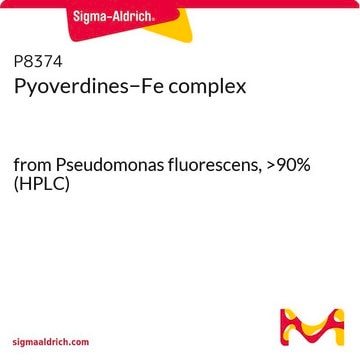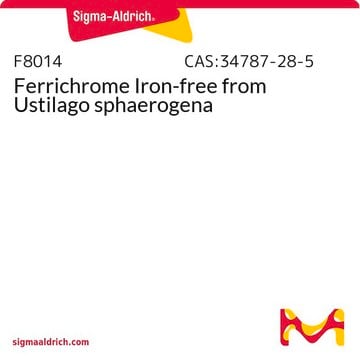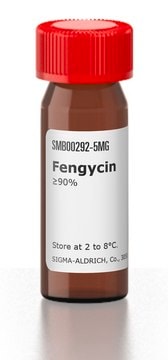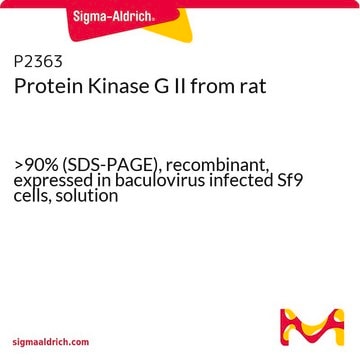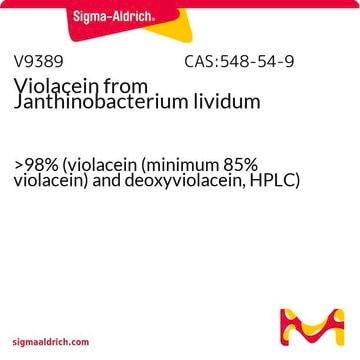P8124
Pyoverdines
from Pseudomonas fluorescens, >90% (HPLC)
Synonyme(s) :
Pyoverdine Detection, Pyoverdine Protein, Siderophore Protein
About This Item
Produits recommandés
Source biologique
Pseudomonas fluorescens
Niveau de qualité
Pureté
>90% (HPLC)
Forme
powder
Solubilité
H2O: ~10 mg/mL
Conditions d'expédition
wet ice
Température de stockage
−20°C
Vous recherchez des produits similaires ? Visite Guide de comparaison des produits
Application
- in tryptophan fluorescence quenching to determine its binding to neutrophil-gelatinase-associated lipocalin (NGAL)
- to detect pyoverdine diffusion surrounding siderophore-conjugated monobactam (MB-1)-resistant colonies in chelexed, dialyzed Mueller-Hinton broth (CDMHB)
- for synchronous fluorescence spectra of purified pyoverdine
Actions biochimiques/physiologiques
Forme physique
Produit(s) apparenté(s)
Code de la classe de stockage
11 - Combustible Solids
Classe de danger pour l'eau (WGK)
WGK 3
Point d'éclair (°F)
Not applicable
Point d'éclair (°C)
Not applicable
Certificats d'analyse (COA)
Recherchez un Certificats d'analyse (COA) en saisissant le numéro de lot du produit. Les numéros de lot figurent sur l'étiquette du produit après les mots "Lot" ou "Batch".
Déjà en possession de ce produit ?
Retrouvez la documentation relative aux produits que vous avez récemment achetés dans la Bibliothèque de documents.
Les clients ont également consulté
Notre équipe de scientifiques dispose d'une expérience dans tous les secteurs de la recherche, notamment en sciences de la vie, science des matériaux, synthèse chimique, chromatographie, analyse et dans de nombreux autres domaines..
Contacter notre Service technique
